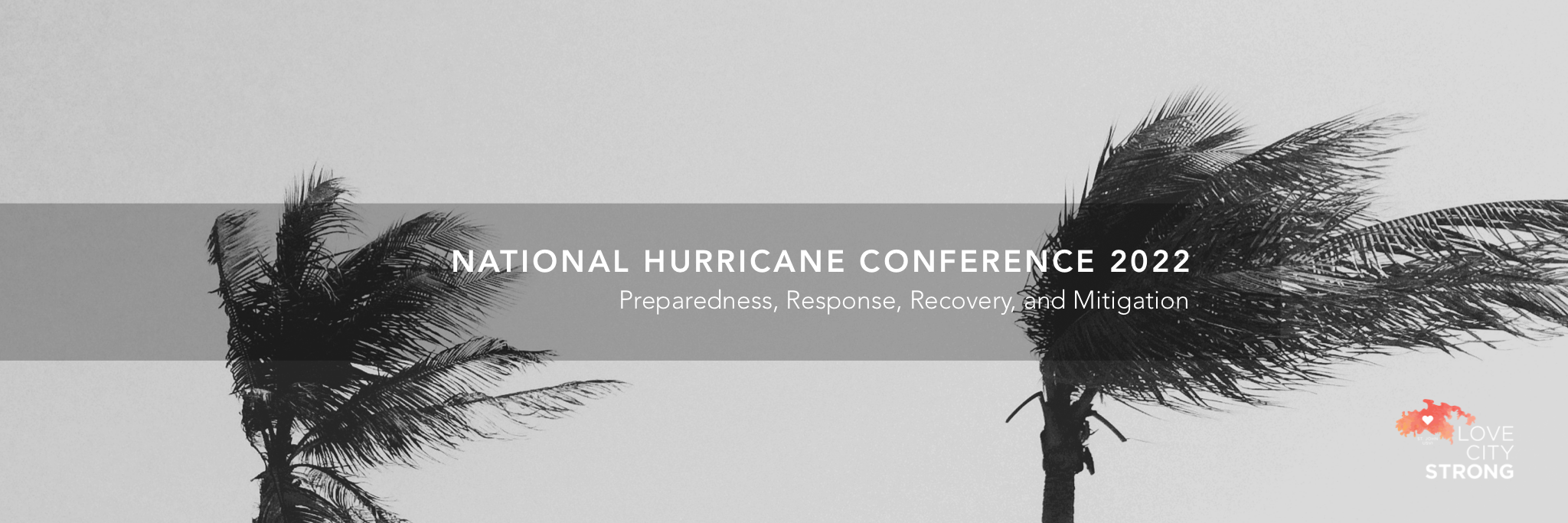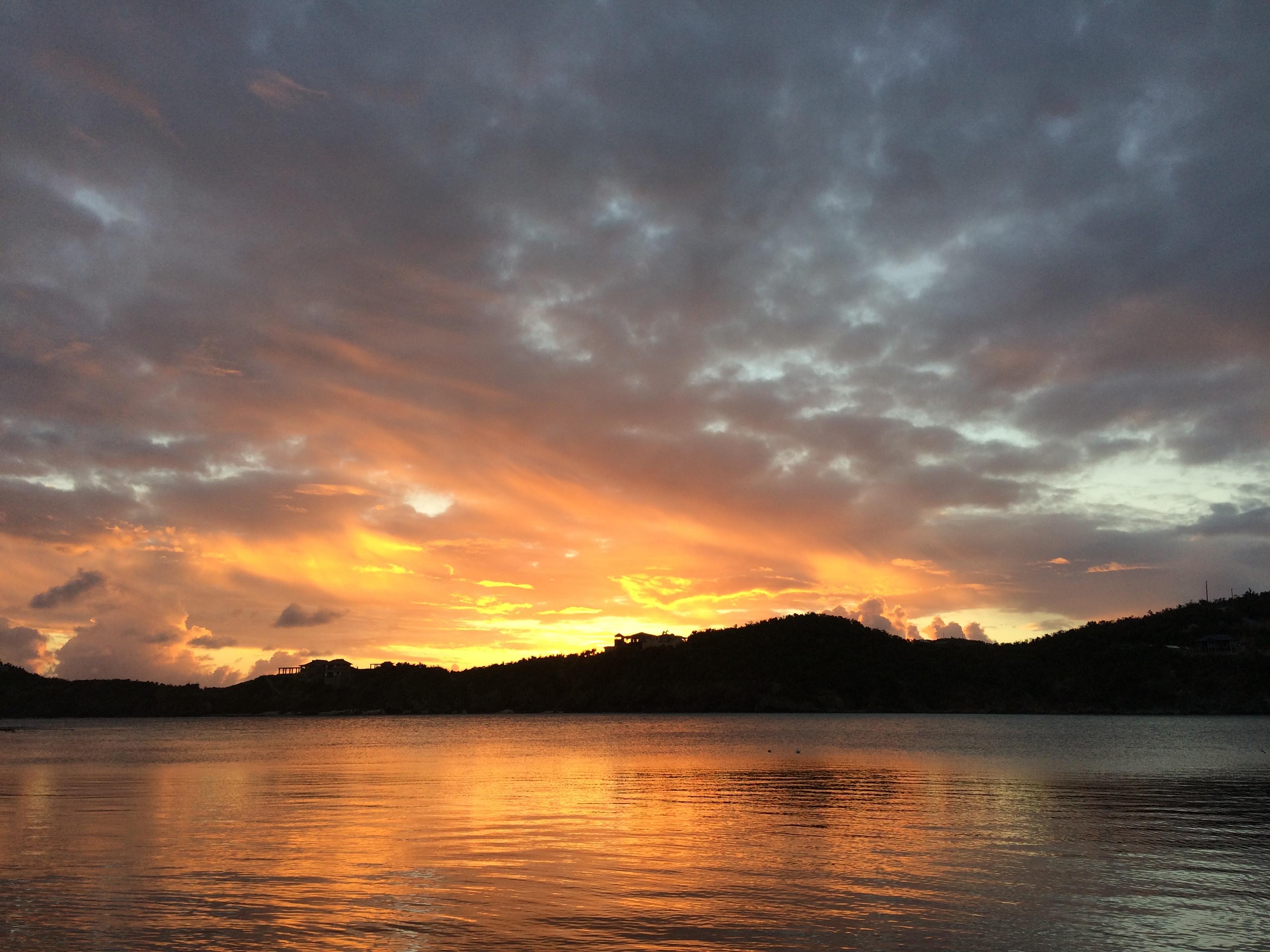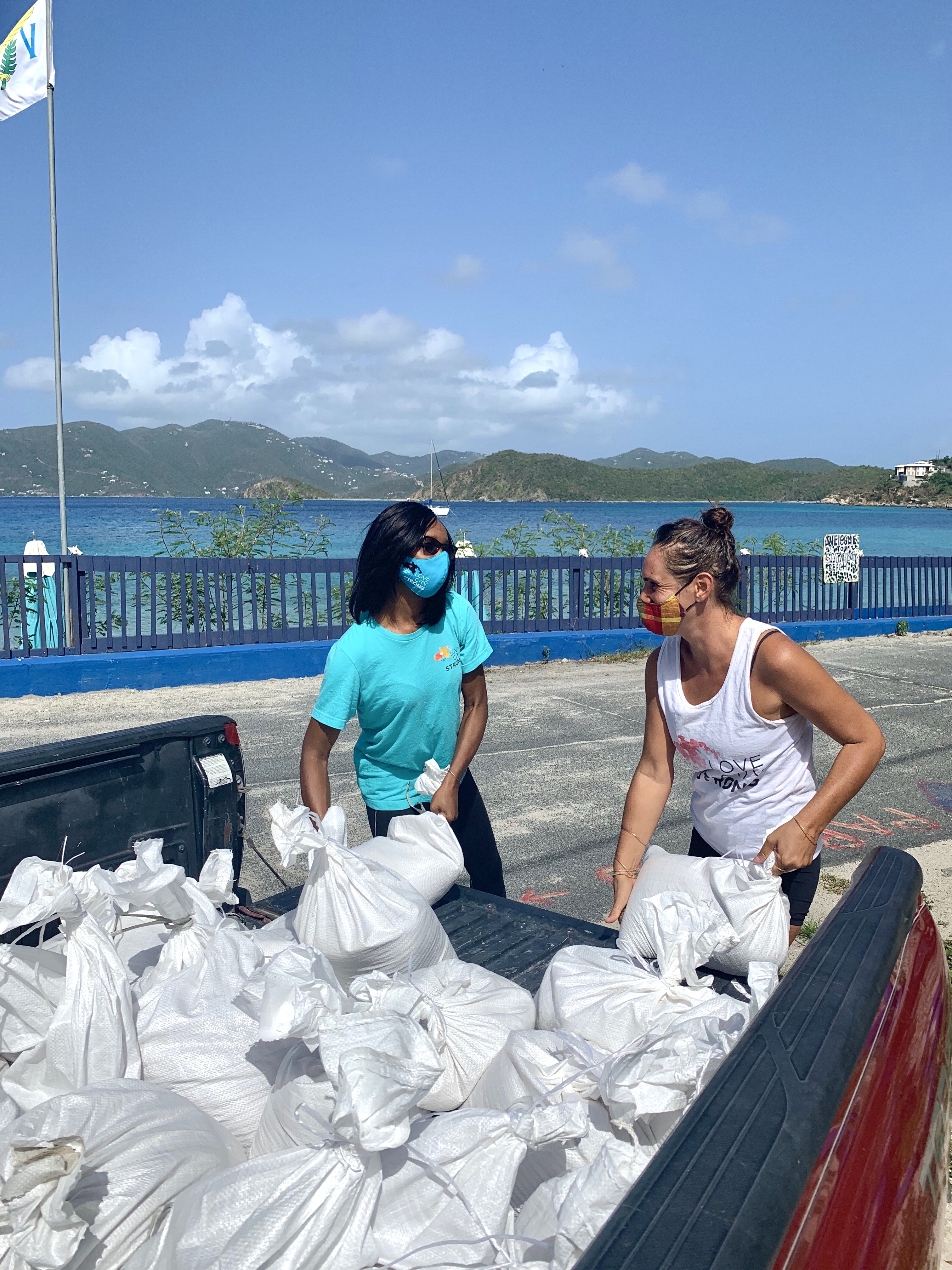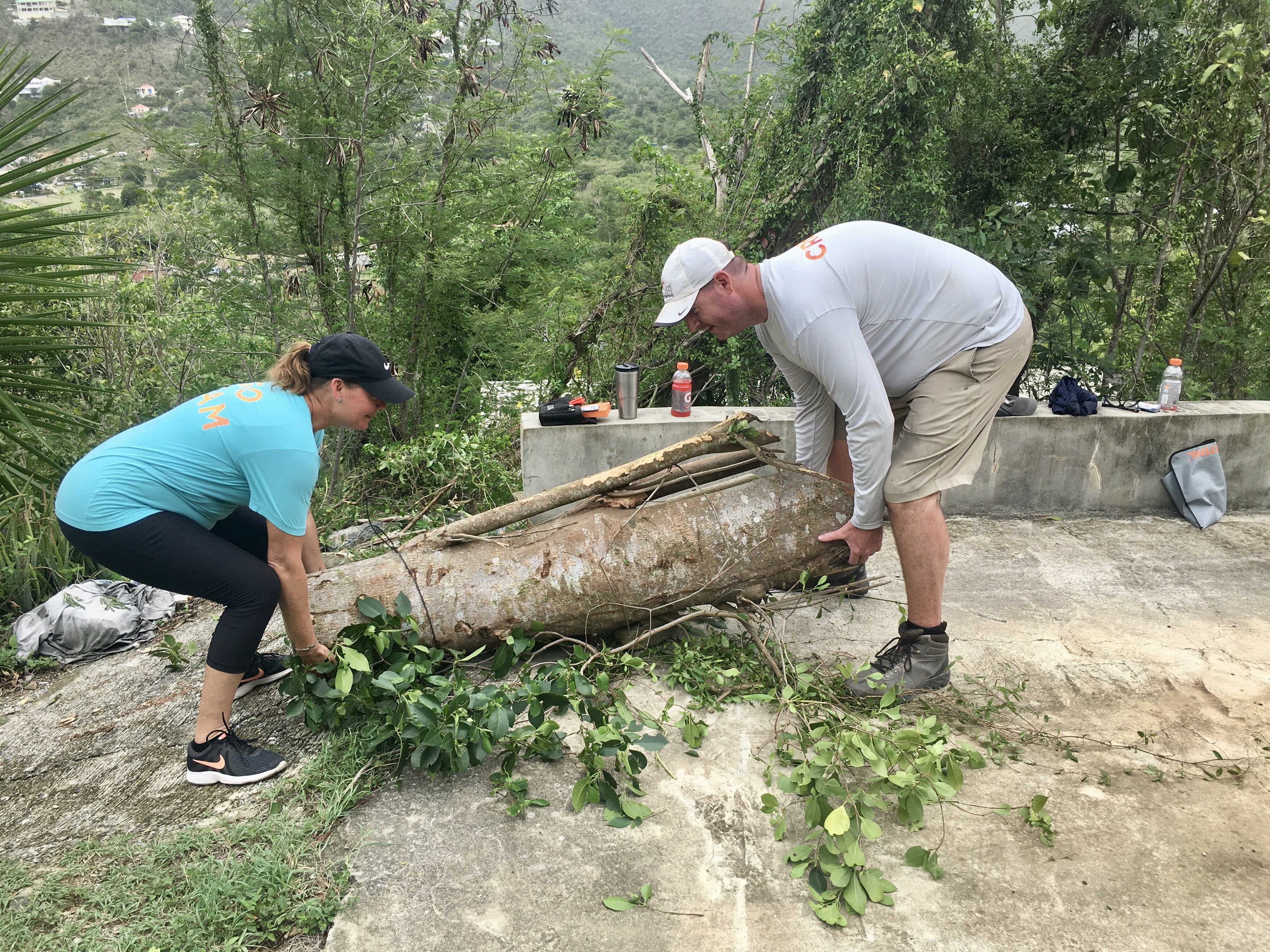
This week, I am pleased to be attending the 2022 National Hurricane Conference in Orlando. This annual event is focused on hurricane preparedness, response, recovery, and mitigation. Panels are focused on a variety of sectors, including technological developments, communications, forecasting, federal mitigation programs, public-private partnerships, and more.
One particularly exciting development this year is the presence of the Territory’s emergency management agency, VITEMA, on several panels. On Monday, Assistant Director Barbara Petersen, Deputy Director for Planning and Preparedness Regina Browne, Deputy Director of Operations Bruce Kelly, and Public Information Officer Erik Ackerson led a panel on local emergency response to the Covid-19 pandemic. Their presentation highlighted some of the challenges the Territory faced, as well as the many successes of VITEMA and the VI Department of Health over the last two years.
On Tuesday, Assistant Director Petersen and Deputy Director Browne hosted a panel focused on the Territory’s Hazard Mitigation & Resilience Plan. They were joined by Dr Greg Guannel, Director of the Green Caribbean Center at the University of the Virgin Islands. The robust discussion addressed climate change, infrastructure, and the need for systemic solutions to complex problems in the Territory.
Wednesday afternoon is dedicated to the NHC General Session. This event will include an appearance by FEMA Administrator Deanna Criswell as well as an Equity in Disasters panel. The Territory’s own Regina Browne is a panelist for the Equity in Disasters session. Along with her, a diverse group of representatives from emergency management organizations and nonprofits will discuss the importance of planning to ensure equity in disaster response.
While the VITEMA panels have certainly been relevant to our work at LCS, other opportunities abound. The NHC provides an invaluable chance to network with emergency managers, federal responders, vendors and subject matter experts from across the country. While each disaster is unique, there’s a great deal we can learn from the experiences of other communities, and we hope that our experiences are valuable to them as well. I am thrilled to be back at the National Hurricane Conference this year, and am already looking forward to next year’s meeting in New Orleans.

The Territory entered the 2020 hurricane season on high alert, facing the forecast of an active season paired with the COVID-19 pandemic. At Love City Strong, we began modifying and updating our preparedness and response plans early on, reaching out to our partners at Virgin Islands Territorial Emergency Management Agency (VITEMA), the Virgin Islands Department of Health (VIDOH), the Virgin Islands Department of Human Services, and the Centers for Disease Control (CDC) for guidance and best practices for responding to a disaster during a global health crisis.
Thanks to our work responding to the pandemic on St. John, our team was already used to wearing personal protective equipment (PPE) and adhering to social distancing protocols. We modified our annual community outreach programs, becoming less reliant on public events and leveraging public and private partnerships in order to successfully respond to two significant weather events while keeping residents informed.
Tropical Storm Isaias impacted the Territory on July 29th, and our response lasted from July 25th through July 30th. This large system moved quickly, but did not turn into a tropical storm until it passed just south of St Croix. Our team remained on alert and executed pre- and post-storm wellness checks in the community, shifting from at-home visits to conducting them entirely over the phone. We assisted residents with downed trees and minor storm debris on their property, and brought resources like solar powered lights to those experiencing power loss.
A wave of severe weather associated with Tropical Storm Laura impacted the Territory in the early morning hours of Saturday, August 21st. Once again, what was expected to be a significant rain event stayed to our south, resulting in a limited impact. Within 24 hours of the forecast impact, we knew that the path would keep Laura from being much of a threat to the USVI, but our team continued to execute pre- storm wellness checks, and helped several residents with boarding up and clearing their property.
This hurricane season saw us working closely with VITEMA and our other government partners, as well as our sister nonprofits affiliated with Virgin Islands Voluntary Organizations Active in Disaster (VI VOAD), to keep St. John prepared. Between storms this year, we delivered sandbags to over 100 households, and handed out blue roofing via a drive-through system alongside our partners. Both of these events would normally be done in the form of large public gatherings, but we were able to execute them successfully while still observing social distancing and PPE use.
The 2020 hurricane season taught us much about the unpredictable nature of disaster preparedness, and emphasized the complex relationship between multiple disasters that share the same impact window. I am proud of the work our team has done this year, in the face of so many challenges. As the season comes to a close, we look forward to further refining our deployment plans, expanding our preparedness and resilience programming, and serving the community in the years to come.

The Atlantic Hurricane Season triggers countless emotions for many Virgin Islanders and residents of the VI. This is not only a time when we are busy preparing for the possibilities of storms; it is also a time of year that we tend to remember the one storm that changed the course of so many lives.
On September 6, 2017 Hurricane Irma cut a path of destruction through the Caribbean basin, impacting the lives of millions. With record high wind speeds of 185 miles per hour, Irma was one of the deadliest and to date the strongest storm on record in the Atlantic region. St. John was utterly devastated; the island experienced widespread destruction to its structures, roads, critical infrastructure and widespread power loss.
13 days later, Hurricane Maria followed, and delivered a second, crushing blow. St. John received over 3 feet of rain in under 24 hours, and response efforts made by our sister islands were forced to halt completely. Maria was the tenth-most intense Atlantic hurricane on record, with peak winds of 175mph.
To say that such unprecedented natural disasters changed the reality of everyday life in the Virgin Islands would be an understatement. The team at Love City Strong suffered our share of losses due to the storms of 2017. Many of us lost our homes or our jobs, and some of us endured even greater personal hardships.
However, just as our shared experiences as survivors of natural disasters are what brought us together, it is our collective passion for preparedness that keeps us motivated and helps us to get through this difficult time of year. It is fitting, then, that the anniversary of Hurricanes Irma and Maria falls during National Preparedness Month—A time to ensure that the impact of natural disasters is reduced through meaningful action.
For LCS, meaningful action means implementing strategies that worked after Hurricanes Irma and Maria in a more organized fashion, and ensuring that response assets are prestaged on the island and ready to be deployed at a moment’s notice.
Each year, we deploy 25 seasonal employees who are on standby from July through November; they are trained in a variety of safety, first aid, and professional first responder protocols. Part of this team are trained to remove debris from secondary roadways. All members of this team are Virgin Islanders or longtime residents who have lived on St. John for no less than five years, and they are from a variety of backgrounds and age ranges to better reflect the diversity of the community.
We maintain a variety of response assets, including large commercial generators and several pieces of heavy equipment, that we can provide to essential businesses should the need arise. We facilitate the permanent storage of FEMA assets on St. John, including shelf sustainable water and MREs, to ensure that we do not need to wait for commodities to be transported from another island. We also coordinate with the Virgin Islands Territorial Emergency Management Agency (VITEMA) to assist them in their hurricane readiness efforts, like distributing sandbags and blue roof materials.
We perform pre-event and post-event wellness checks on hundreds of residents every single time that a storm is headed our way, regardless of its size, and assist seniors and persons with access and functional needs in their preparedness efforts.
Though our preparedness priorities shift as we face new and dynamic challenges like the COVID-19 pandemic, our core mission remains the same: Take meaningful action and utilize the human resources present in the community to ensure that St. John is better prepared for disasters. While we will never forget the traumatic experience of the 2017 hurricanes that brought us together, we have a collective commitment to being part of a stronger, more prepared community. The passion that guided our actions immediately following Irma and Maria continues to drive us in our constantly evolving preparedness and response programs.

An active season has continued in the tropics throughout the month of August. Whether a season is “active” or not depends less on landfalls and more on the number of systems that are tracked throughout, and all coastal interests from the Caribbean to the southeast United States and the Gulf Coast have been aware of increasing activity in the Atlantic over the past several weeks. Love City Strong began monitoring Invest 98L on August 18th, and the next day NHC upgraded and began tracking tropical depression 13 (TD 13). The system was forecast to track directly over the U.S. Virgin Islands as a tropical storm, but took a more westerly course and the center of circulation ended up passing about 200 miles south of St Croix. Like TS Isaias, this was anticipated to be a fairly significant rain event, but St John recorded only about an inch of precipitation throughout the impact window, and the majority of the severe weather moved through during the early morning hours of Saturday, August 21st. No curfew was instituted, likely due to the fact that the Territory was under a COVID-19 related Stay at Home order at the time.
As usual, our team began regular meetings 72 hours prior to the projected Saturday impact. We continued these meetings until the morning of Sunday the 23rd – they were discontinued at that point due to the minimal impact of TS Laura on the Territory. On Monday the 24th, the Go Team proceeded with follow up calls to the High Risk wellness checklist.
Lessons from TS Isaias were implemented in our strategies, including earlier check ins within the organization to ensure personal preparedness at home. It became clear approximately 24 hours prior to the projected impact that TS Laura was going to stay well south of the U.S.V.I., but our team deployed as planned in the interest of continuity and routine practice. We believe our ability to pivot remains critical to a successful, efficient response, whether we’re facing a worse than anticipated impact or what amounts to simply a rainy day. We continue to fine tune the scalability of our programs from event to event, and know that each successfully executed cycle of deployment will further the community’s preparedness for whatever comes next. As we navigate the peak of 2020 hurricane season, we anticipate ever more opportunities to test the efficacy of our programs.

Each year as the month of July wanes, residents of the Virgin Islands begin to monitor the weather in the tropics more closely. The traditional peak of hurricane season won’t arrive until mid-September, but “early” storms are becoming more and more common as global weather patterns change.
On July 25th, the team at Love City Strong (LCS) began monitoring Invest 92L. Invests, also referred to as “areas of interest”, are numbered 90 through 99 and followed by the suffix letter “L” in the Atlantic Basin. The numbers are rotated throughout the season as often as needed. Invests are monitored for development by the NHC, and as they organize they escalate to a tropical depression, a tropical storm, a hurricane, or occasionally a potential tropical cyclone (PTC), in the case of an invest that is approaching land and requires forecasting but has not yet organized. Invest 92L was escalated to PTC 9 on July 28th, and the National Hurricane Center (NHC) began official forecasting for the system.
The large system moved quickly but did not manage to coalesce into Tropical Storm Isaias until the evening of July 29th, when it was passing the Territory to the south of St Croix. One of the paradoxes of hurricane season is that we’re almost always hoping a passing system will be a manageable but significant rain event, even as we pray to be spared a damaging impact. Tropical Storm Isaias did not deliver on this front, at least for St. John, as the center of circulation passed further to the south of the Territory than expected, limiting the amount of rain we received. The majority of the severe weather moved through St. John in the early hours of the 30th, and curfew was lifted Territory wide at 6 am.
Each storm that passes through the Territory serves as something of a fire drill. Our team uses these incidents as an opportunity to test our deployment plans, to adjust our response, and to identify weaknesses in existing operations and communications plans. In the case of Isaias, we executed routine briefings, morning and afternoon, throughout the week leading up to the system’s projected impact on our community, and in the days after. The Go Team began pre-impact wellness checks 48 hours before the weather was expected, and all LCS managed sites and assets were secured. The team stayed in close contact with the Virgin Islands Territorial Emergency Management Agency (VITEMA), the Federal Emergency Management Agency (FEMA), our Virgin Islands Voluntary Organizations Active in Disaster (VI VOAD) partners, and partnering organizations on St John throughout the incident.
After a storm passes, we gather the team to discuss the successes and failures of our response. Identifying the ways in which our plans failed, or underperformed is a critical part of developing our future programs, training, and community outreach. Each storm offers unique opportunities to test our various protocols and plans, and this year promises to offer more lessons than ever, as we layer a global pandemic atop the annual tropical weather threats.
When we recognize weaknesses, unmet needs, or challenges to our organizational routine the team collaborates to come up with next steps, potential solutions, and partners who may have valuable knowledge to contribute. Each storm is unique, and whether large or small, they each pose their own challenges.
Tropical Storm Isaias helped us streamline our incident log system and develop a more thorough follow up process on community requests. It crystalised the need for our LCS team to be proactive about our own preparedness, since we are often in the field in the days leading up to a storm, and may not have time to handle last minute preparations. It also provided us with an opportunity to clarify lines of communication and reporting structure within a disaster, as those sometimes differ from our day to day, “blue skies” structure.
Overall, the response to Tropical Storm Isaias was a valuable learning opportunity for the LCS team, and provided several critical takeaways. We identified points of friction in our systems, and developed actionable steps in place to remedy those. As we continue to experience impacts of varying size and complexity, our response will become increasingly scalable and effective.
